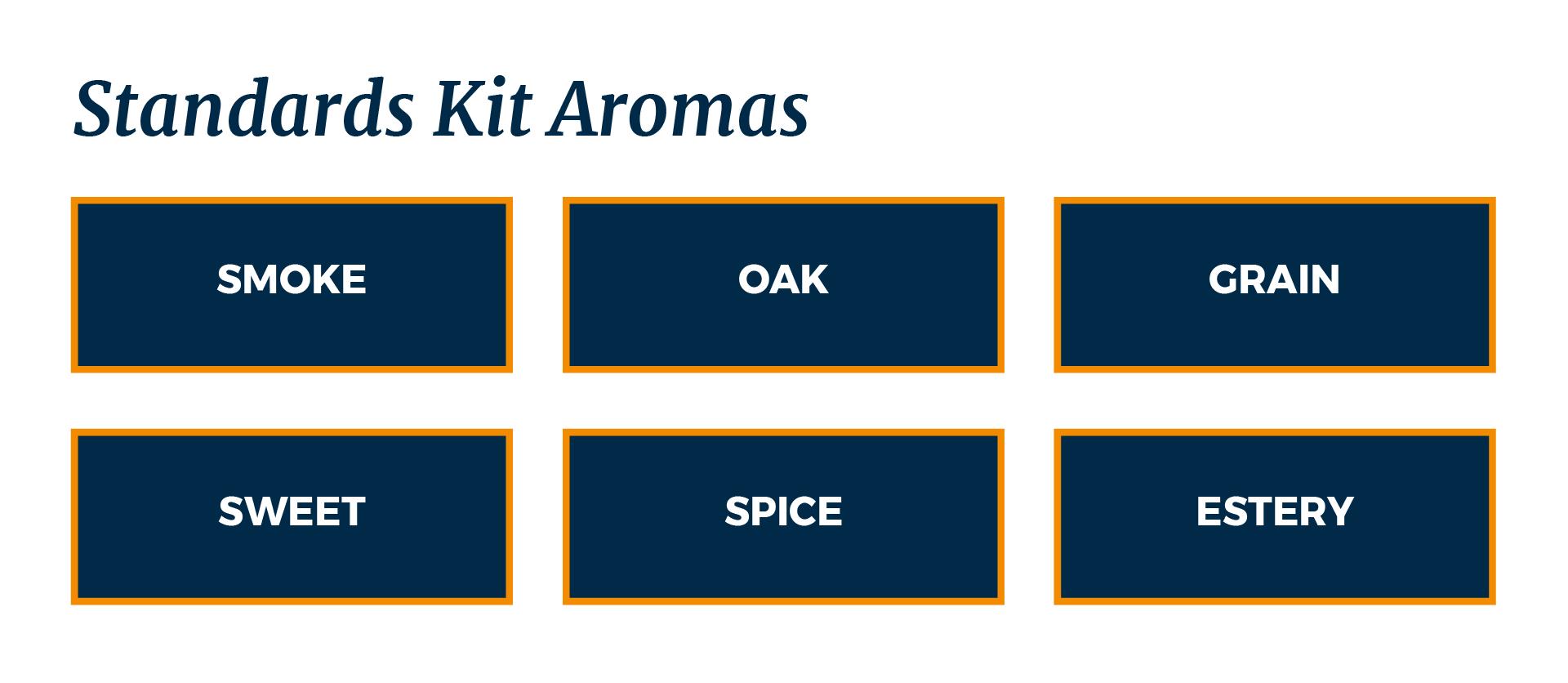An Introduction to ISC Barrels' R&D Sensory Panel
Sensory analysis is a critical aspect of research and development at ISC. Each year we lay down new experimental barrels and our sensory panel provides our team with data to track the performance of each barrel. In conjunction with chemical analysis, we rely on this sensory data to maintain barrel quality, develop new products, and test new flavor possibilities.
 Our sensory panel is comprised of 12 individuals, each with different roles in the spirits industry – cooperage workers, spirits writers, master distillers and distillery employees. During tastings, our panelists look for six different flavor parameters that will map out a barrel’s impact on the spirit. Ultimately, they determine if the barrel can consistently yield a palatable product. We elected a panel with varied experience in tasting spirits to represent the broad range of individuals that will consume the finished products that go into our barrels.
Our sensory panel is comprised of 12 individuals, each with different roles in the spirits industry – cooperage workers, spirits writers, master distillers and distillery employees. During tastings, our panelists look for six different flavor parameters that will map out a barrel’s impact on the spirit. Ultimately, they determine if the barrel can consistently yield a palatable product. We elected a panel with varied experience in tasting spirits to represent the broad range of individuals that will consume the finished products that go into our barrels.
Our experiments each last an average of four years. During this time, we pull barrel samples once a year. From those samples we make composites and deliver them to our sensory panel for evaluation.
Figure 1 represents a single pull from one experiment currently in trial. During an evaluation, panelists will taste each variant in the experiment no less than three times. This repetitive format allows our team to gather a more reliable pool of data.

Figure 1
By the completion of the experiment in figure 1 each panelist will have tasted 180 samples. Some of our experiments have as many as 25 different barrels and some as few as two. The experiment’s goals determine the number of barrels we use.
Choosing Flavor Parameters
To determine which flavor parameters to judge our samples on, we asked our sensory panel to taste eight different whiskies and note every descriptor that came to mind. We complied the data received and looked for prominent frequencies within the population (See figure 2). From this point, we decided which high-frequency descriptors were indicative of barrel influence and focused on the ones we felt were important.

This exercise identified which aromas our panelists were most sensitive to and allowed us to pinpoint the criteria to judge experimental barrel performance by. Our six flavor parameters keep tastings simple and efficient. Asking an individual to critique a sample across too many parameters is time consuming, difficult to do and can also render the data useless.
Developing an Aroma Standards Kit

 Once we established our target flavors or “aromas”, it was time to develop a standards kit. We carefully developed our aroma standards kit by choosing six different chemicals that mimic each of the target aromas. Panelists received a kit as a training tool to become very familiar with the aromas and to give each panelist a common reference. By consistently nosing each chemical – starting at high concentrations then slowly diluting the substance over time – it trains their senses to become adept at picking up these specific compounds, even at low concentrations.
Once we established our target flavors or “aromas”, it was time to develop a standards kit. We carefully developed our aroma standards kit by choosing six different chemicals that mimic each of the target aromas. Panelists received a kit as a training tool to become very familiar with the aromas and to give each panelist a common reference. By consistently nosing each chemical – starting at high concentrations then slowly diluting the substance over time – it trains their senses to become adept at picking up these specific compounds, even at low concentrations.
Both chemical and sensory analysis are necessary tools in evaluating barrel aged spirits, but at the end of the day, the technology to accurately and thoroughly evaluate spirits based on chemical analysis alone is not enough. Oak maturation is one of the most complex chemical processes in existence and much of the mechanics are still yet to be understood. Until that happens, our sensory panel will be a crucial part to our efforts at delivering the world’s finest barrels.

Andrew Wiehebrink
About the Author
Andrew joined the ISC team as the head of Research and Development in early 2016. His primary focus is working with ISC customers to develop and test new products. He will also design experiments to gather data on whiskey maturation, barrel performance, process and product innovation.
As a self-described, "bourbon fanatic" Andrew enjoys drinking and studying the history of bourbon. He also owns and operates a farm in Oldham County Kentucky that develops custom corn breeds for use in distilling.

